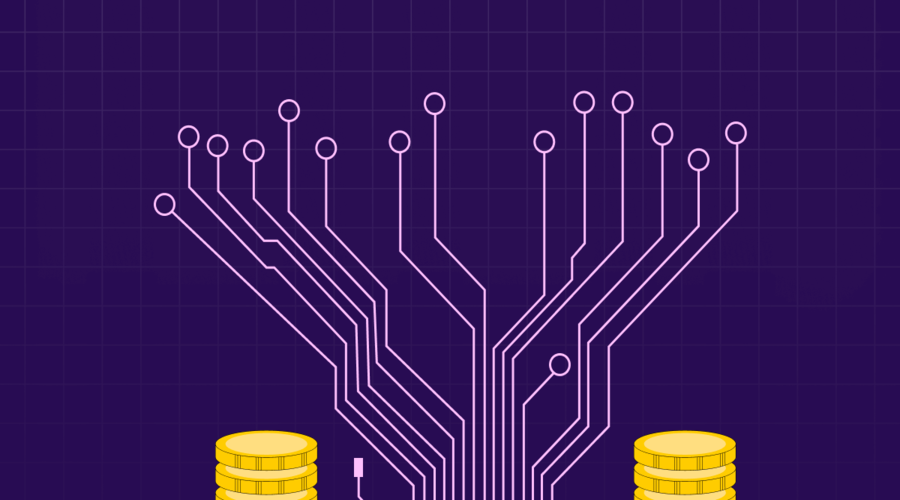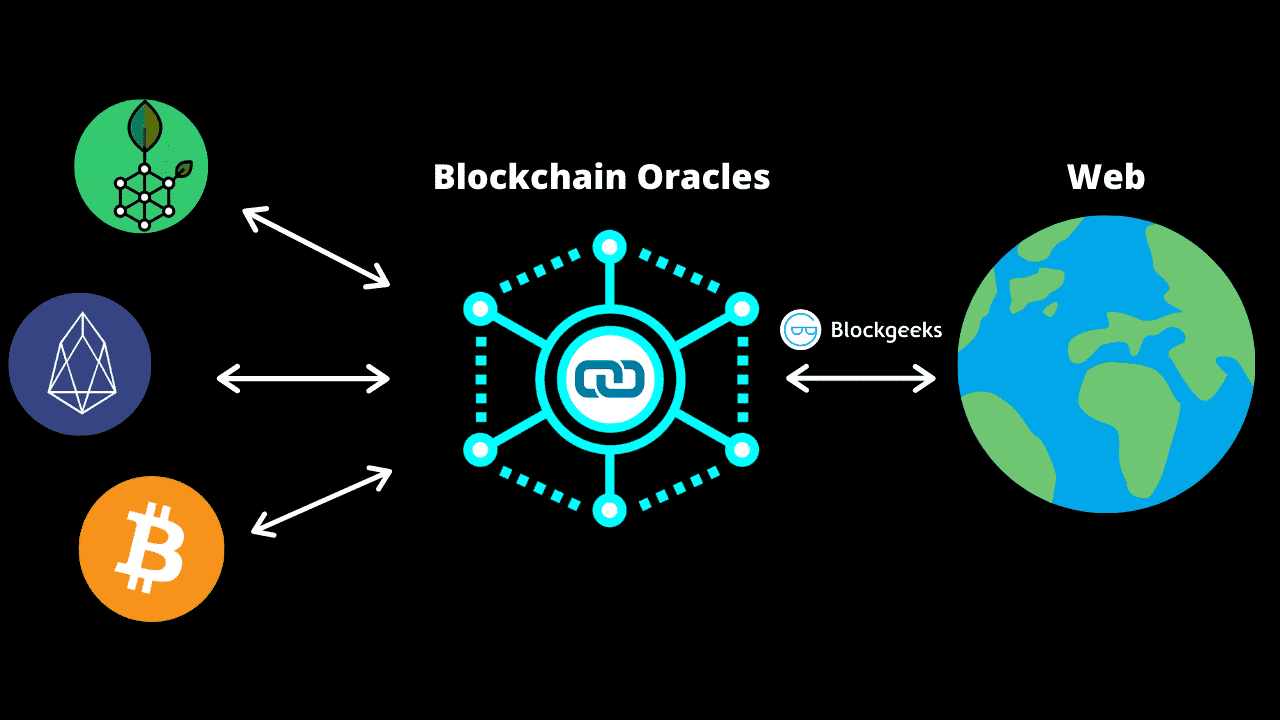Blockchain technology has gained significant attention for its decentralized and secure nature. One aspect of blockchain that contributes to its security is the concept of forks. Forks play a vital role in ensuring the integrity and resilience of blockchain networks. In this article, we will explore the role of forks in blockchain security and their impact on maintaining a robust and trustworthy blockchain ecosystem.
Introduction
In blockchain technology, a fork refers to a split or divergence in the blockchain’s history and protocol. Forks can occur for various reasons, such as software upgrades, disagreement among network participants, or attempts to resolve security vulnerabilities. While forks may seem disruptive, they serve an essential purpose in maintaining the security and consensus mechanisms of blockchain networks.
Types of Forks

There are primarily two types of forks: soft forks and hard forks.
1. Soft Forks
A soft fork is a backward-compatible upgrade to the blockchain protocol. In a soft fork, the new rules introduced are compatible with the existing protocol, allowing nodes that have not upgraded to continue participating in the network. Soft forks aim to tighten the rules or introduce new features without causing a complete split in the blockchain’s history. This ensures a smooth transition and maintains the network’s overall security.
2. Hard Forks
A hard fork, on the other hand, involves a significant and irreversible divergence in the blockchain protocol. In a hard fork, the new rules introduced are not backward-compatible, meaning that nodes that have not upgraded will not be able to validate or recognize the new blocks. This results in the creation of two separate blockchains with their own histories. Hard forks often occur due to fundamental changes in the protocol, such as changes to the consensus algorithm or the introduction of new features.
Role of Forks in Blockchain Security
Forks play several critical roles in maintaining blockchain security:
1. Network Upgrades and Bug Fixes
Forks are essential for introducing necessary upgrades and bug fixes to the blockchain network. Through soft forks, the blockchain protocol can be enhanced or tightened, improving its security, scalability, or functionality. This allows the network to adapt to new challenges, address vulnerabilities, and incorporate technological advancements while ensuring backward compatibility.
2. Consensus Mechanism
Forks also play a role in the consensus mechanism of blockchain networks. They enable participants to reach a consensus on the validity of transactions and the state of the blockchain. Forks help ensure that the majority of network participants agree on the current state of the blockchain, preventing malicious actors from manipulating or tampering with the data. By reaching a consensus through forks, blockchain networks maintain their decentralized and secure nature.
3. Resilience and Network Stability
Forks contribute to the resilience and stability of blockchain networks. In the case of hard forks, when there is a divergence in the blockchain’s history, participants have the freedom to choose which chain they want to support. This allows the network to adapt to different perspectives, resolve disagreements, and continue functioning. Forks provide a mechanism for network participants to voice their opinions and make decisions collectively, promoting the decentralization and robustness of the blockchain ecosystem.
4. Community Governance
Forks also serve as a means of community governance in blockchain networks. They enable participants to express their views and influence the direction of the network. Forks can occur when there are significant disagreements among stakeholders regarding the network’s rules, governance, or future development. Through forks, different factions can create separate chains, each aligning with their vision and principles. This fosters a sense of ownership and participation within the community, allowing diverse perspectives to coexist and drive innovation in the blockchain ecosystem.
Forks and Network Consensus
Forks play a crucial role in establishing network consensus in blockchain systems. Consensus algorithms, such as Proof-of-Work (PoW) or Proof-of-Stake (PoS), rely on the agreement of network participants to validate transactions and maintain the integrity of the blockchain. When a fork occurs, network participants must choose which chain to support, effectively deciding on the consensus rules they consider valid. This decision-making process reinforces the decentralized nature of blockchain systems, as it relies on the majority of participants to reach agreement and ensure the security of the network.
Forks as a Security Mechanism
Forks act as a security mechanism in blockchain networks. In the case of a potential security vulnerability or a successful attack on the network, a fork can be initiated to address the issue and protect the system’s integrity. By creating a new branch or chain, network participants can implement security fixes, patch vulnerabilities, and effectively nullify the impact of the attack. Forks serve as a defense mechanism, allowing the community to respond to security threats swiftly and protect the assets and data stored on the blockchain.
Governance and Forks
Forks are closely tied to the governance of blockchain networks. Decisions regarding upgrades, changes to consensus mechanisms, or modifications to the blockchain’s rules require consensus among network participants. In decentralized governance models, forks provide a mechanism for stakeholders to express their opinions and influence the direction of the network. Forks can occur when there are disagreements or conflicting visions within the community regarding the network’s governance. This ability to fork and create separate chains with different rules and philosophies ensures that blockchain networks remain adaptable and responsive to the diverse needs and preferences of their communities.
Forks and Blockchain Diversity
Forks contribute to the diversity and evolution of the blockchain ecosystem. As different factions within the community create separate chains through forks, new chains with distinct features and functionalities emerge. These forks can serve as experimentation grounds for novel consensus mechanisms, privacy enhancements, scalability solutions, and governance models. This diversity stimulates innovation and allows blockchain technology to evolve rapidly, with different forks offering unique approaches to address specific use cases or challenges. The competition between these chains fosters continuous development and improvement within the blockchain space.
Challenges and Risks of Forks
While forks have their benefits, they also present challenges and risks. Forks can create confusion and fragmentation within the community, leading to a split in resources and efforts. Additionally, the existence of multiple chains resulting from forks can dilute the network’s overall security, as hashing power and resources may be distributed across multiple chains. Coordination among different chains and ensuring network effects are maintained can be challenging. Moreover, contentious hard forks can lead to a permanent split in the community and diminish trust in the blockchain ecosystem.
Forks and Community Consensus
Achieving consensus among network participants during a fork is crucial for maintaining the security and functionality of blockchain systems. Forks require coordination and communication among stakeholders to decide which chain to support. Community-led governance processes, open discussions, and transparent decision-making mechanisms are vital to ensuring that forks are executed smoothly and that consensus is reached. Engaging in active dialogue, considering diverse perspectives, and implementing mechanisms for community voting and feedback can facilitate consensus-building during forks.
Forks and Network Consensus
Forks play a crucial role in establishing and maintaining network consensus in blockchain systems. Consensus is the mechanism by which participants in a blockchain network agree on the validity and order of transactions. Forks allow for the resolution of conflicts and disagreements among network participants, ensuring that the majority of participants reach a consensus on the state of the blockchain.
When a fork occurs, it signifies a divergence in the blockchain’s history, resulting in two or more separate chains. Each chain represents a different version of the blockchain, with its own set of transactions and rules. Network participants must choose which chain to support, and the chain with the majority of participants becomes the dominant chain.
Through the consensus process during forks, blockchain networks ensure that transactions are verified and added to the blockchain in a decentralized and secure manner. The consensus mechanism, such as Proof-of-Work or Proof-of-Stake, relies on the majority of participants agreeing on the validity of transactions and the state of the blockchain. This agreement reinforces the security and integrity of the network, as malicious actors would need to control the majority of the network’s computing power or stake in order to manipulate the consensus process.
Forks as a Security Mechanism
Forks serve as a security mechanism in blockchain networks, allowing for the resolution of potential security vulnerabilities or attacks. In the event of a security breach or a discovered vulnerability, a fork can be initiated to address the issue and protect the integrity of the network.
When a security vulnerability is identified, network participants can propose and implement changes to the blockchain’s protocol through a fork. This can involve modifying the consensus algorithm, introducing new security measures, or patching vulnerabilities. By creating a new branch or chain, participants can implement the necessary security fixes while preserving the integrity of the original chain.
Forks as a security mechanism demonstrate the robustness and resilience of blockchain technology. They allow the community to respond proactively to security threats, preventing further exploitation of vulnerabilities and ensuring the safety of the network and its participants. This ability to address security concerns quickly and efficiently is a significant advantage of blockchain systems compared to traditional centralized databases or systems.
Governance and Forks
Forks are closely intertwined with the governance of blockchain networks. Governance refers to the decision-making processes and structures within a blockchain ecosystem that determine the network’s rules, protocol upgrades, and overall direction.
In decentralized blockchain networks, forks can occur as a result of disagreements or differing visions within the community regarding the network’s governance. These forks allow factions within the community to create separate chains with their own rules and principles.
Forks serve as a mechanism for stakeholders to express their opinions and influence the direction of the network. They provide an avenue for dissenting voices to be heard and alternative approaches to be explored. This aspect of governance ensures that blockchain networks remain adaptable, inclusive, and reflective of the diverse needs and preferences of their communities.
However, it is important to note that contentious hard forks can also lead to permanent splits in the community. These splits can result in fragmented resources and efforts, diluting the network’s overall security and potentially diminishing trust in the blockchain ecosystem. Balancing the need for governance and the potential risks of forks requires careful consideration and community engagement.
Forks and Blockchain Diversity
Forks contribute to the diversity and evolution of the blockchain ecosystem. As different factions within the community create separate chains through forks, new chains with distinct features and functionalities emerge. These forks serve as experimental grounds for testing and refining new consensus mechanisms, privacy enhancements, scalability solutions, and governance models.
Conclusion
Forks play a crucial role in maintaining the security, consensus, and resilience of blockchain networks. They enable necessary upgrades, bug fixes, and protocol enhancements while preserving backward compatibility. Forks contribute to the consensus mechanism, ensuring that the majority of network participants agree on the blockchain’s state. They also promote community governance and allow for different perspectives to coexist within the blockchain ecosystem. By understanding the role of forks in blockchain security, we can appreciate their importance in building and maintaining robust and trustworthy blockchain networks.
I’m a best-selling author and leading authority in the world of cryptocurrency. I have been involved in the crypto community since 2012 and have helped numerous startups and organizations on blockchain strategy. I am a regular contributor to Forbes and CoinDesk, and my work has been featured in The Wall Street Journal, Bloomberg, Reuters, and other major media outlets. In addition to writing for publications, I am also a sought-after speaker on cryptocurrency and blockchain technology niches respectively.




